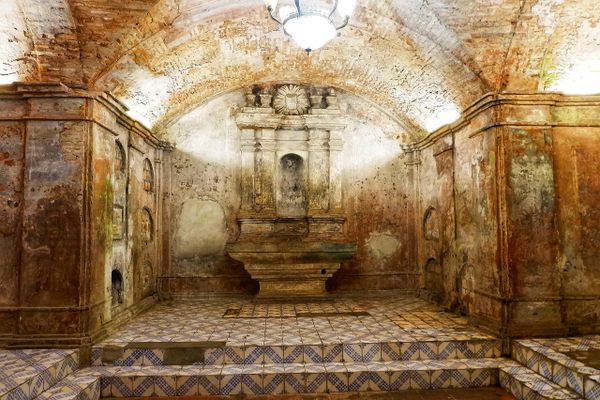About
Just over the railroad tracks from the historic center of Ljubljana, you can take a stroll, run your dog, or go on a romantic picnic in the gorgeous (if not a little morbid) final resting place of notable Slovenian writers, politicians, religious leaders, and innovators, some of whom died over 200 years ago.
The story of Navje is the circular story of abandonment and restoration.
In the 1700s, as an amendment to the St. Christopher’s Church, a cemetery was started. It was the only primary cemetery for notable figures of Ljubljana and Solvenia as a whole, and held prominence until the early 1900s. It became a secondary location only after the new architecturally superior Zale cemetery was completed, 2 miles Northeast under designer Jože Plečnik, notable for his works in Vienna and Prague.
St. Christopher’s cemetery had now fallen out of favor, and after moving the majority of its inhabitants, it was largely abandoned, becoming overgrown and run down in just a few short years. Working on another project in a corner of the old cemetery, Plečnik had an idea: to turn a portion of the older cemetery into a memorial shrine to the most famous and deserving Slovenians. The stunning white stone arcade, built in 1865, was repurposed as a Pantheon of Slovenian heroes, and between 1936 and 1940 the graves and headstones of further notables were moved into the park. Given a new name, "Navje," derived from Slovenian folk mythology, the park began to take shape. But in April 1941, the Axis invaded Yugoslavia, and all construction on the park came to a screeching halt. The city, burdened by war, once again neglected it.
During the war, remains scheduled to be buried in Zale were unceremoniously buried in Navje, and key remains meant to be relocated there such as Prešeren's, Trubar's, Maister's and Rusjan's were never moved. As World War II ended, Plečnik fell out of favor with the communist government of Yugoslavia, the grand aspirations for Navje were forgotten, all burials there stopped, and it was abandoned.
For five long decades, Navje was neglected, but when Slovenia gained its independence, a new sense of national pride was resurrected, and they began restoring the park in the 1990s. Today the park is a beautiful place to sit in the quiet or enjoy the company of a few friends. On any given day Navje will be home to people running with their dogs, strolling with baby carriages, or enjoying a few rays of sun. It is a park of remembrance of the dead and recreation for the living.
Related Tags
Forest to Table in Alpine Slovenia
A Forest-to-Table Gastronomy Adventure in Slovenia.
Book NowPublished
January 21, 2013




























